
Ambitious exhibition “Lavinia” by MIA Art Collection transports Italian Mannerist Art to Dubai’s DIFC
“Lavinia” an ambitious exhibition by MIA Art Collection, brings the work of Italian Mannerist artist Lavinia Fontana (1552 – 1614) to Dubai’s DIFC. The centerpiece ‘Portrait of a Boy’ is transported from Italy and exhibited alongside 4 contemporary, female Italian artists’ works. The exhibition highlights the importance of this woman artist from the Post-Medieval era.
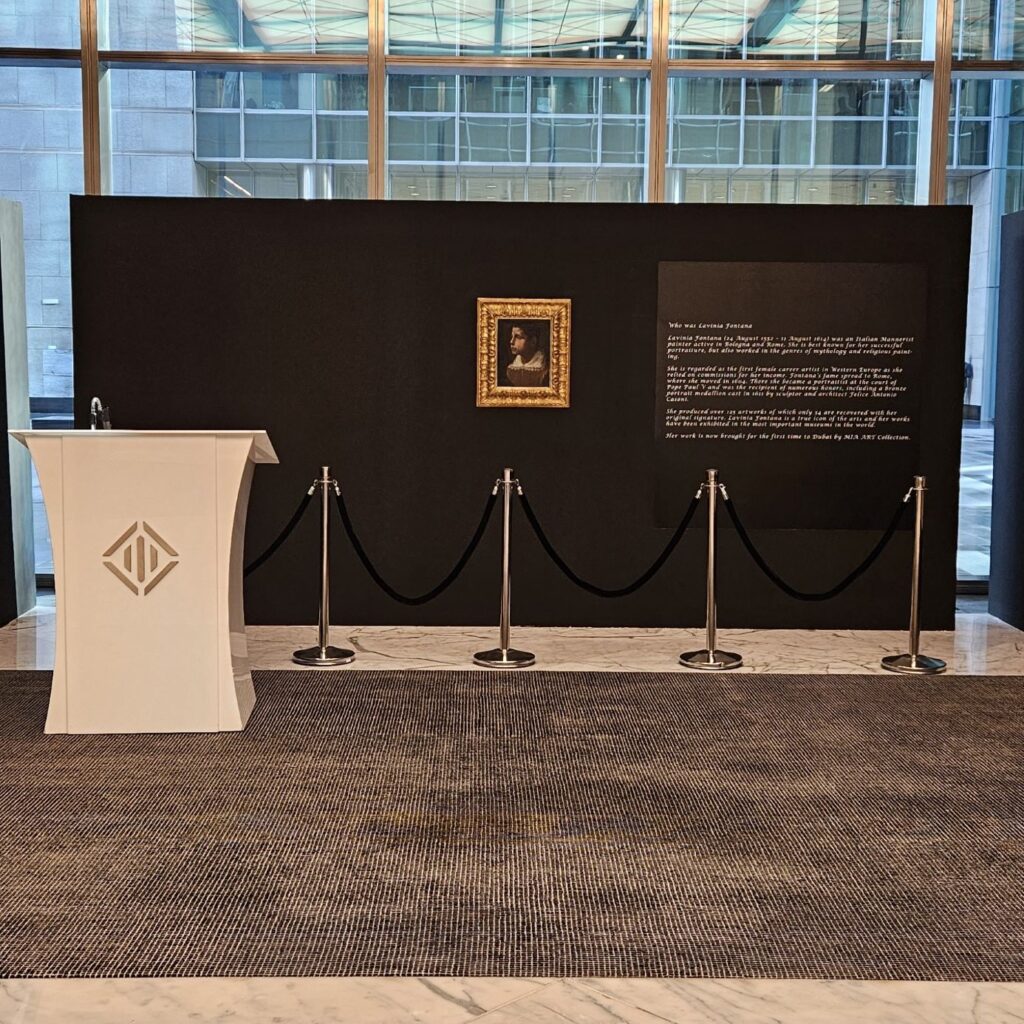
Lavinia Fontana (1552 – 1614), ‘Portrait of a Boy’, curated by MIA Art Collection, DIFC Dubai. On display until March 29, 2024
MIA Art Collection has long championed the woman artist, bringing to the fore the importance of the female gaze, the feminine approach to art and the role of the woman throughout art history. Now, the founder and director of MIA, philanthropist Alejandra Castro Rioseco, has once again raised the bar with an ambitious exhibition titled “Lavinia”. The “Lavinia” exhibition highlights Lavinia Fontana (1552 – 1614), a renowned, Mannerist female Italian artist, and one of her artworks ‘Portrait of a Boy’ as a centerpiece. A selection of artworks by 4 contemporary, female Italian artists are featured as well. The intention is to transport the viewer to a different time of artistic and cultural activity, in the heart of Dubai’s DIFC district. The exhibition thus celebrates female artists throughout one of the richest periods in artistic history in Europe; the Late Renaissance and Baroque in Italy.

Mrs Alejandra Castro Rioseco, director of MIA Art Collection and chief curator of the “Lavinia” exhibition

Mrs Alejandra Castro Rioseco gives a speech about the “Lavinia” exhibition by MIA Art Collection
In 16th century Italy, the Bolognese noblewomen were praised not only for their beauty but also for their academic achievements. The University of Bologna accepted female students, and Lavinia Fontana was one of them. She was an established portraitist early in her career; her early clientele were scholars and academics. Later on, she would evolve into a high-fashion society portraitist, which drove the prices of her commissions up. Many noblewomen sat for her, and Fontana would emphasize their beauty in these portraits. In 1577 she would marry, and eventually bore 11 children (she would be survived by only 3 of them). Historical data suggests that she had an engaging personality, which drew to her fore Bolognese noblewomen; many of these women would come to stand as godmothers for her children. (Caroline Murphy, 1996)
In regards to her domestic life, her husband would give up his career as a painter to manage the family affairs and act as her assistant; this is a testament to her success in her career as a professional artist. In addition to portraits, she also painted religious narratives and scenes from Mythology. Eventually in 1603, she would relocate to Rome to act as an official painter to the papal court. In 1611, she was honored by a commemorative medal that portrayed her on both sides in different ways. (Marilyn Stokstad, 2005)
I spoke with chief curator and director of MIA Art Collection Mrs Alejandra Castro Rioseco about the “Lavinia” project. My first question was about the timing of the exhibition and the importance of the overarching theme. Annually, MIA Art Collection schedules an exhibition during Art Dubai; every year the theme is different and presents the best of what the MIA team offers.
The centerpiece of the exhibition is a portrait by Lavinia Fontana titled ‘Portrait of a Boy’ with the inscription ‘DANNI XII’ on the top. It is an oil on canvas, date unknown. The current, original location of the centerpiece was Italy. The undertaking of MIA was to transport this historical piece from Italy to Dubai; a first venture of its kind.
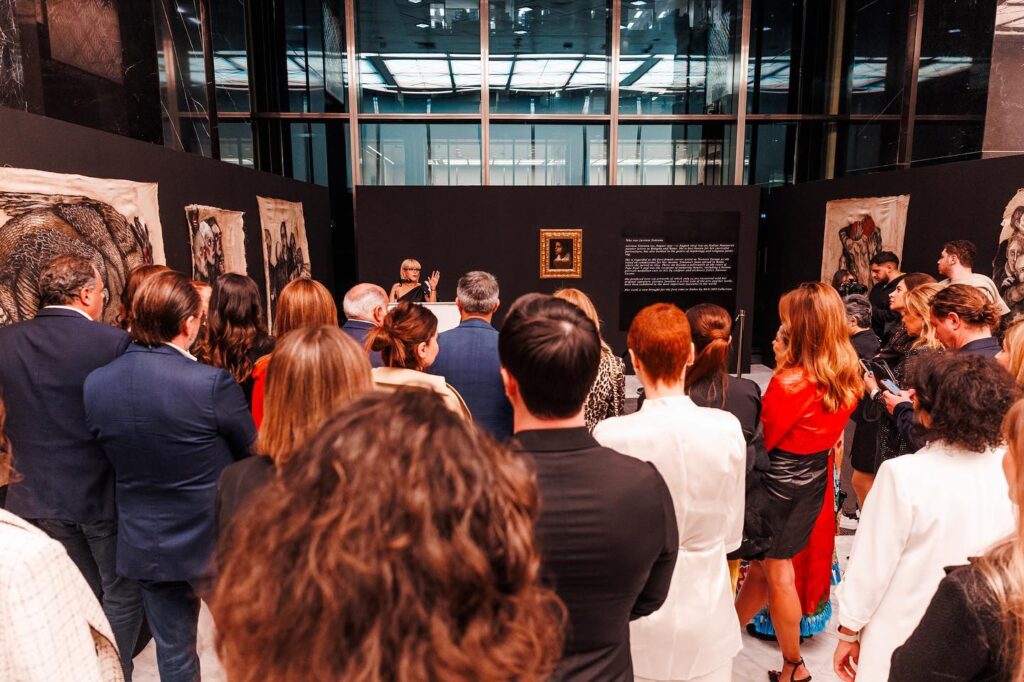
Mrs Alejandra Castro Rioseco delivers an address at the opening of “Lavinia” at DIFC
“Lavinia is one of the artists that I have been studying for many years, because she is an icon of Baroque art in the world,” Mrs Alejandra shares with me. “She was a visionary and tremendously evolved artist for her time. She was the first woman to paint nudes at the end of the 16th century. She was also the first woman to work with the Vatican. And she was the first woman to be considered a ‘professional artist’. She also had a very interesting personal life, being a mother of 11 children of whom she experienced the loss of 8 of them. She worked with her husband who was her assistant.”
“She was a woman with beautiful features,” Mrs Alejandra continues. “She played the piano and studied poetry, amongst other things. She is an example for many artists and for many women. So when we thought with the curatorial team what we wanted to show this year, we realized we wanted to show ‘that nothing is impossible for women and that we can achieve our dreams.’”
“We want to show that nothing is impossible for women, and that we can achieve our dreams.”
Mrs Alejandra Castro Rioseco
One of the goals of the exhibition was to make the public aware of Post-Medieval Art, or pre-modern art; to understand it and value it. Dubai is a city with a large amount of modern and contemporary art; what is new and modern prevails. “We believe that exposing this piece in a public and accessible space like DIFC will undoubtedly bring many reflections of different types, which is ultimately what art seeks,” reflects Mrs Alejandra.

The exhibition space at DIFC for the “Lavinia” exhibition
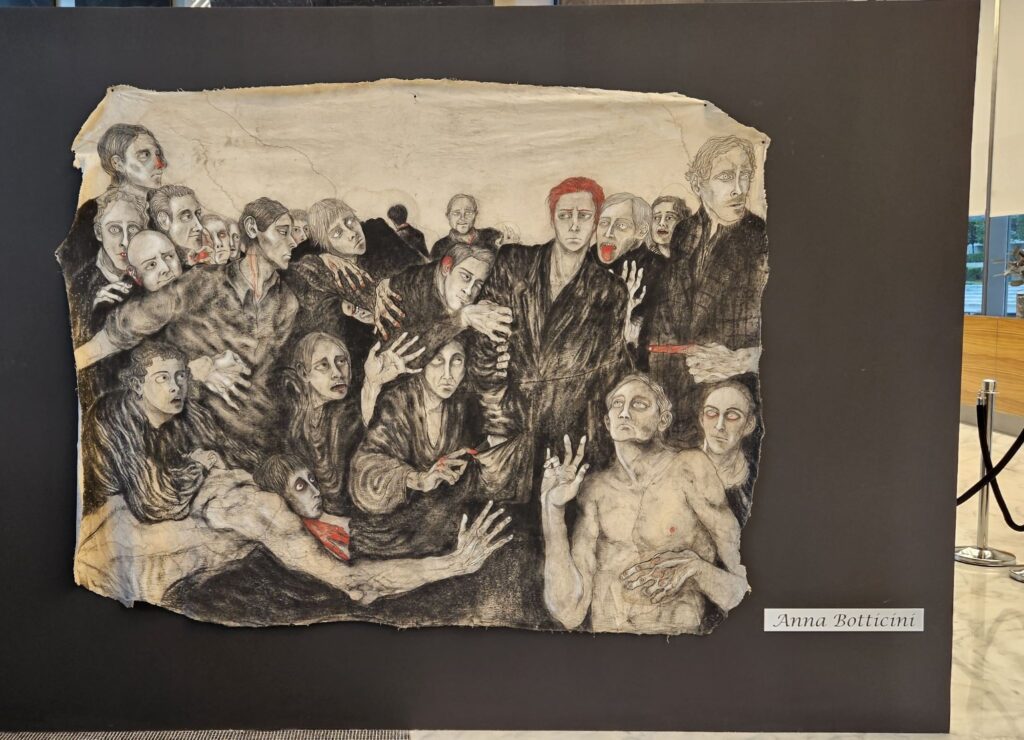
Artwork by Anna Botticini at the “Lavinia” exhibition in DIFC
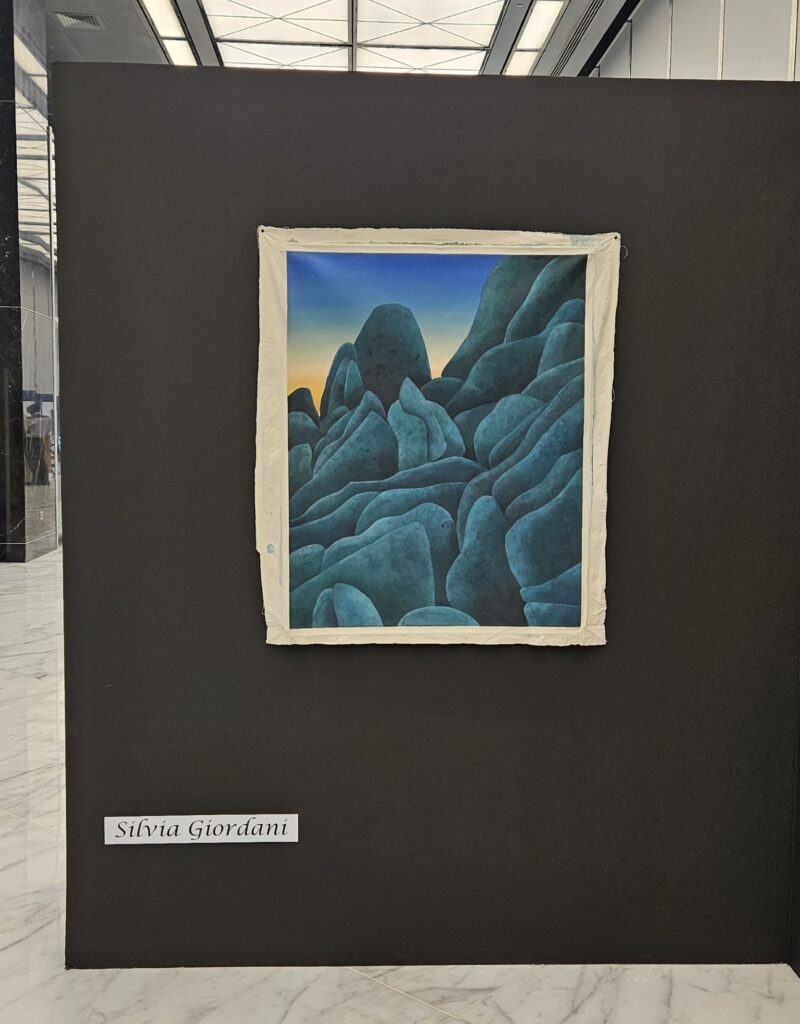
Artwork by Silvia Giordani at the “Lavinia” exhibition in DIFC
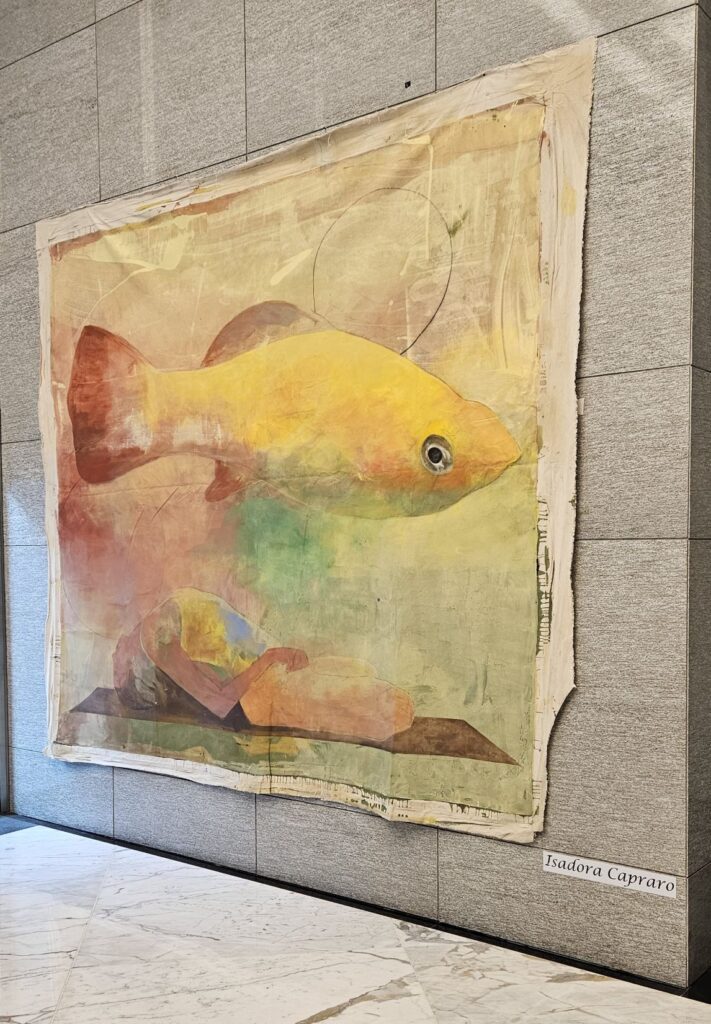
Artwork by Isadora Capraro at the “Lavinia” exhibition at DIFC
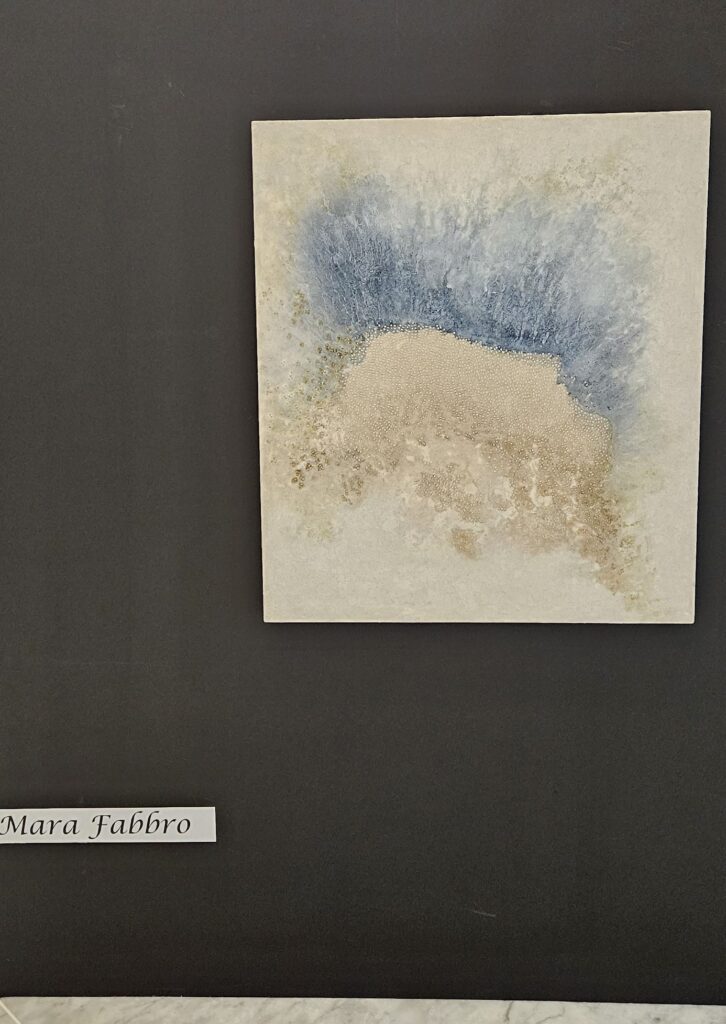
Artwork by Mara Fabbro at the “Lavinia” exhibition at DIFC
On board with the MIA curatorial team was co-curator Mr Matteo Sormani and project coordinator Mrs Hana Sammak El Kurdi. Mr Matteo, who studied the Lavinia centerpiece, formed the search for contemporary Italian artists to participate in the show. The participating artists are: Mara Fabbro, Anna Botticini, Isadora Capraro, and Silvia Giordani. Of these selected artists, all of them had either studied in the same school as Lavinia or followed in her footsteps in some way. They contribute to the exhibition by “bringing the young perspective of the artists to the exhibition, giving it body and developing a conversation between the Mannerist/ Baroque and the contemporary. This shows us the development and evolution of art,” Mrs Alejandra states.
The exhibition sparked conversations between gallerists, curators, collectors, artists and academics in Dubai and the region. Project coordinator Mrs Hana Sammak El Kurdi organized a set of panel talks, discussing the different issues that arose out of the exhibition. These included: a conversation about Lavinia Fontana and her legacy as a trailblazer, discussed between art historian Maie El-Hage, art curator Matteo Sormani and artist Silvia Giordani, moderated by Mrs Hana; a speech by lecturer Behrang Samadzadegan; a discussion about the challenges artists face in balancing their ambitions and personal lives, by art collector Zina Khair, curator Line Kouwatli, and artist Suzi Nassif, moderated by Mrs Hana; a conversation about Artificial Intelligence in Art between art consultant Sara Simonit, artist Fabin Rasheed and artist Magda Malkoun, moderated by Mrs Hana; and a discussion on feminine perspectives between artist Magda Malkoun, art professor Tala Atrouni and gallerist Micha Shirian.
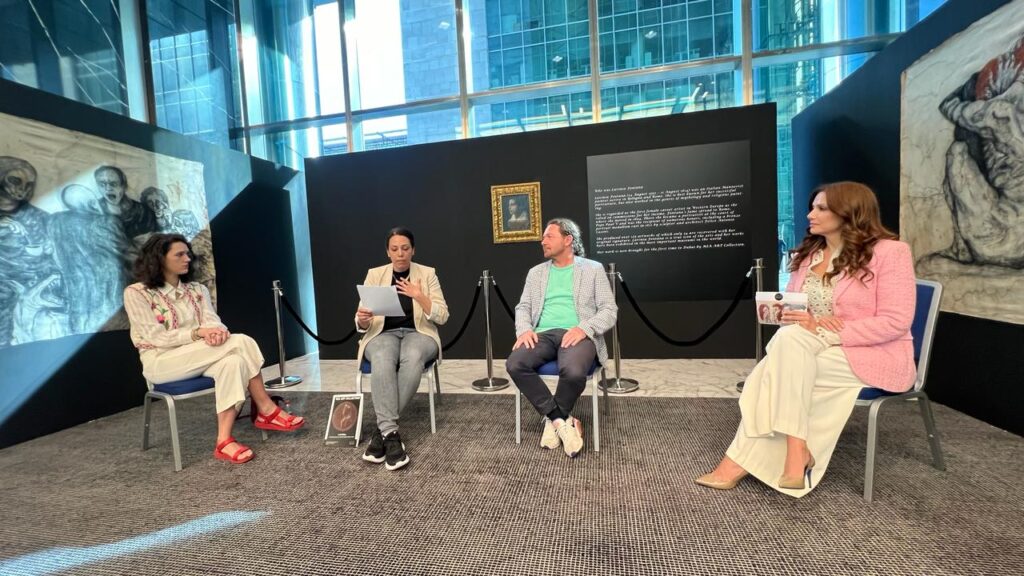
Panel Talk 1: (from left to right) Silvia Giordani, Maie El-Hage, Matteo Sormani and Hana Sammak El Kurdi

Panel Talk 4: (from left to right) Magda Malkoun, Tala Atrouni and Micha Shirian
The project was realized under the auspices of the Istituto Italiano di Cultura di Abu Dhabi, Cultural section of the Italian Embassy to the UAE. The project was launched thanks to the generosity of DIFC in Dubai; the exhibition space is located in the West Lobby of the Gate in DIFC.
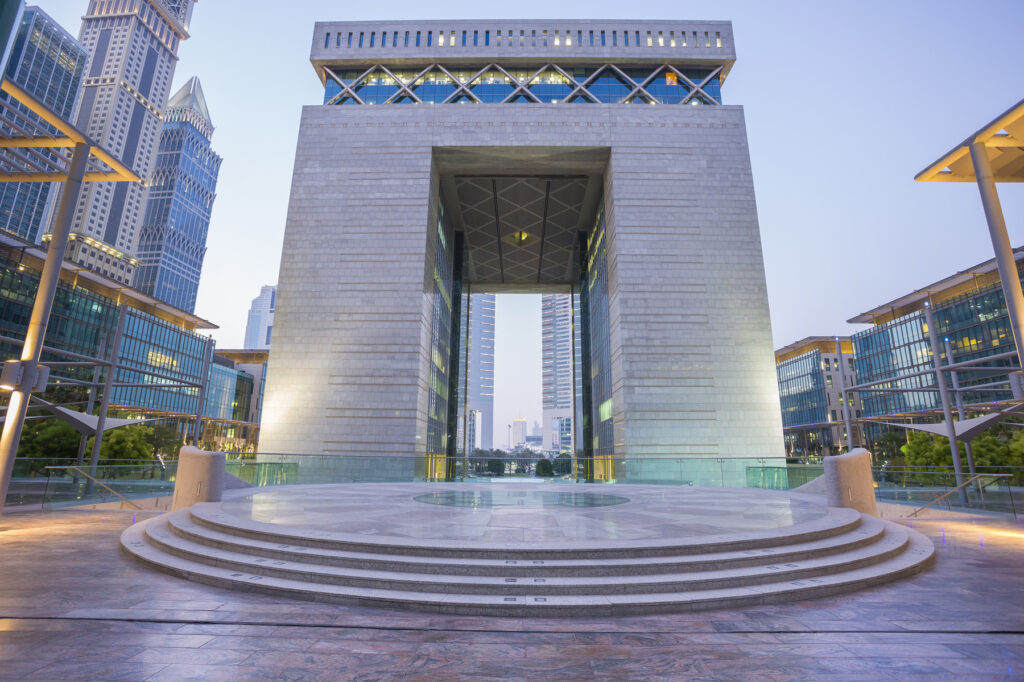
Location of the exhibition at the Gate, DIFC, Dubai
In conclusion, Lavinia Fontana played a vital role in establishing a certain pathway for other women artists of her time. By highlighting her achievements, artwork and career, MIA Art Collection’s exhibition brings to the fore this woman artist of the Mannerist period, in order not to be lost in the pages of history. We can genuinely celebrate the achievements of pre-modern women in Women’s History Month and at our very doorstep, thanks to MIA Art Collection and the ‘Lavinia’ curatorial team.
The exhibition ‘Lavinia’ by MIA Art Collection will remain on display at DIFC, Dubai, until 29 March 2024. If you haven’t yet, make sure to see this spectacular show!
Follow MIA Art Collection on Instagram here.
Follow DIFC on Instagram here.
Follow Istituto Italiano di Cultura di Abu Dhabi on Instagram here.
You may also like
Art on 56th Gallery marks end of 10th Season with Collective Show
Art on 56th Gallery is currently celebrating the end of their 10th season with a Collective Exhibiti
Exclusive! Getting Candid with Elias Ayoub
In an exclusive interview with Beirut-based artist Elias Ayoub, the artist reveals his impressions o
Birdman Takes London: Semaan Khawam at Hoxton Gallery
In his latest London solo show, Semaan Khawam a.k.a. Birdman unveils ‘Birdman Wings & Wheels’ at








